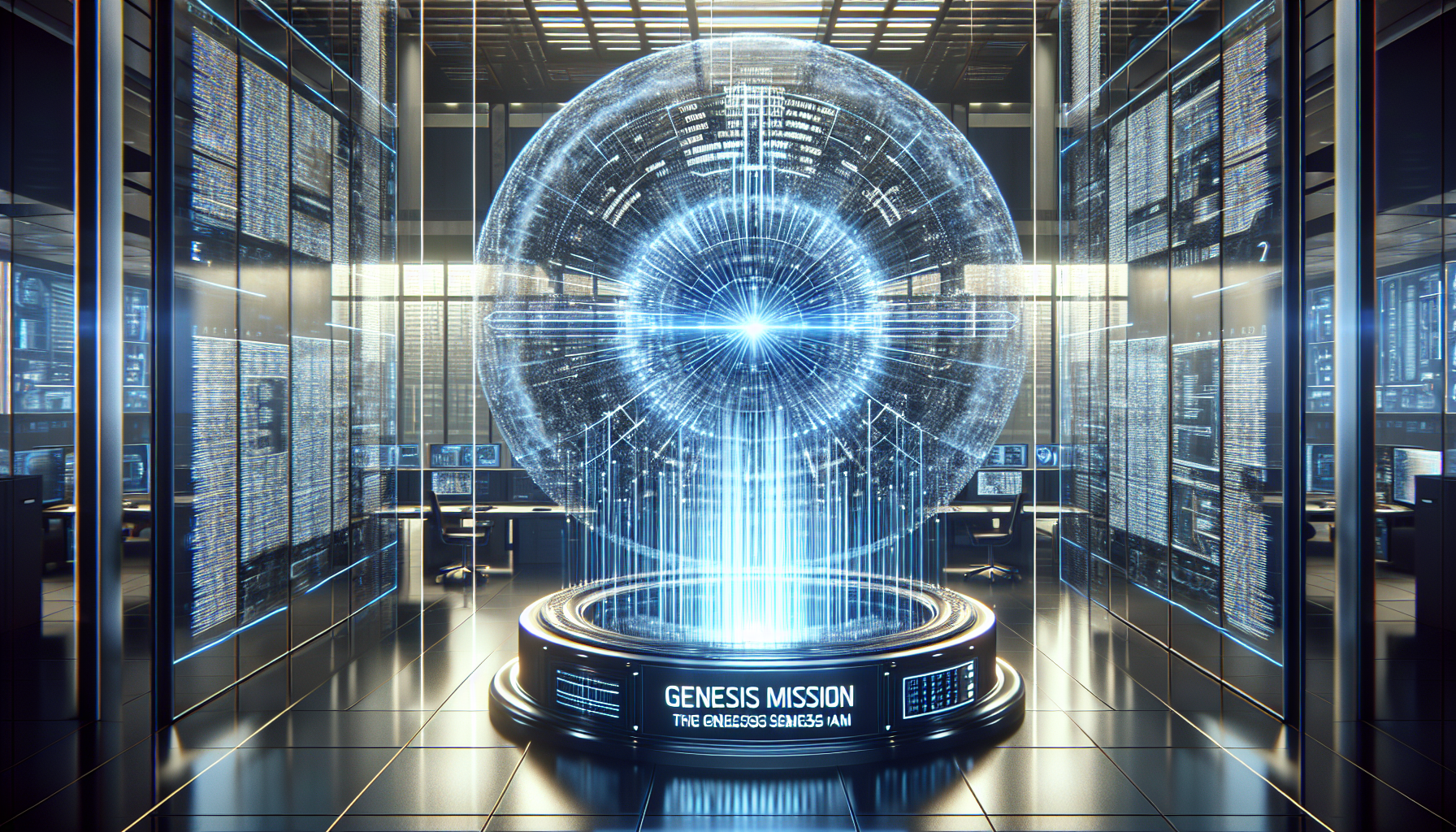
The Genesis Mission: A Novel Chapter for American Science and AI
In a daring effort to transform American science and engineering, President Donald Trump has initiated the “Genesis Mission,” a visionary AI-centered campaign led by the Department of Energy (DOE). This endeavor seeks to enhance the productivity and influence of American science over the next decade by utilizing contemporary advancements in AI and computing technologies.
Utilizing AI for Scientific Progress
The Genesis Mission is poised to establish a centralized hub that will act as a reservoir for an extensive array of datasets. These datasets, gathered over years of federal funding, will also feature contributions from academic institutions and private sector allies. The primary objective is to leverage these datasets to train foundational scientific models, create AI agents, streamline research processes, and hasten scientific innovations.
Linking Advanced Technologies
The platform will amalgamate the foremost supercomputers, AI systems, and cutting-edge quantum technologies with the most sophisticated scientific instruments available in the United States. This integration will be enabled through two independent AI supercomputers in development at the Oak Ridge National Laboratory. Constructed by Hewlett Packard Enterprises and utilizing AMD chips, these supercomputers are pivotal to the Trump AI Action Plan and are intended to confront key challenges in energy, healthcare, wellness, and national security.
A Pivotal Moment for American Science
Dr. Darío Gil, the Under Secretary for Science and Director of the Genesis Mission, characterized the initiative as a pivotal moment for American science. By connecting the nation’s most advanced facilities, data, and computing into a unified framework, the Genesis Mission aims to forge a scientific instrument that enhances research and development productivity and addresses previously unattainable challenges.
Major Challenges and Goals
The Genesis Mission will concentrate on three main challenges:
- Accelerating Nuclear and Fusion Energy: The initiative intends to modernize the energy infrastructure with AI, promising a sustainable and efficient energy future.
Facilitating Scientific Discoveries: Through the power of AI, the mission aspires to propel scientific discoveries that will influence various domains for years to come.
Strengthening National Security: Advancing AI technologies to guarantee the dependability of America’s nuclear arsenal and hastening the development of defense materials.
Initial Actions and Schedule
Over the next four months, the DOE is charged with pinpointing the initial collection of data and model resources for the Genesis platform. Within nine months, the department is required to showcase a preliminary operational capability of the platform for at least one of the national science and technology challenges identified by the government.
Conclusion
The Genesis Mission marks a significant advancement in weaving AI into scientific research and development. By forming a centralized platform that intertwines advanced technologies and datasets, the initiative seeks to tackle essential challenges in energy, scientific discovery, and national security. As the mission unfolds, it has the potential to reshape the foundation of American science and technology.
Q&A Session
Q1: What is the primary aim of the Genesis Mission?
A1: The primary aim is to double the productivity and influence of American science and engineering within a decade by harnessing AI and advanced computing technologies.
Q2: How will the Genesis Mission make use of datasets?
A2: The mission will develop a centralized platform to contain extensive datasets, which will be utilized to train scientific models, develop AI agents, and automate research workflows.
Q3: What significance do the supercomputers at Oak Ridge National Laboratory have?
A3: These supercomputers, integral to the Trump AI Action Plan, will address major challenges in energy, healthcare, wellness, and national security through integration with the Genesis platform.
Q4: What are the three primary challenges the Genesis Mission aims to tackle?
A4: The mission concentrates on accelerating nuclear and fusion energy, driving scientific discoveries, and enhancing national security via advanced AI technologies.
Q5: What is the timeline for the initial rollout of the Genesis platform?
A5: The DOE is expected to identify the initial datasets and model resources within four months and to demonstrate a preliminary operational capability for one national challenge within nine months.